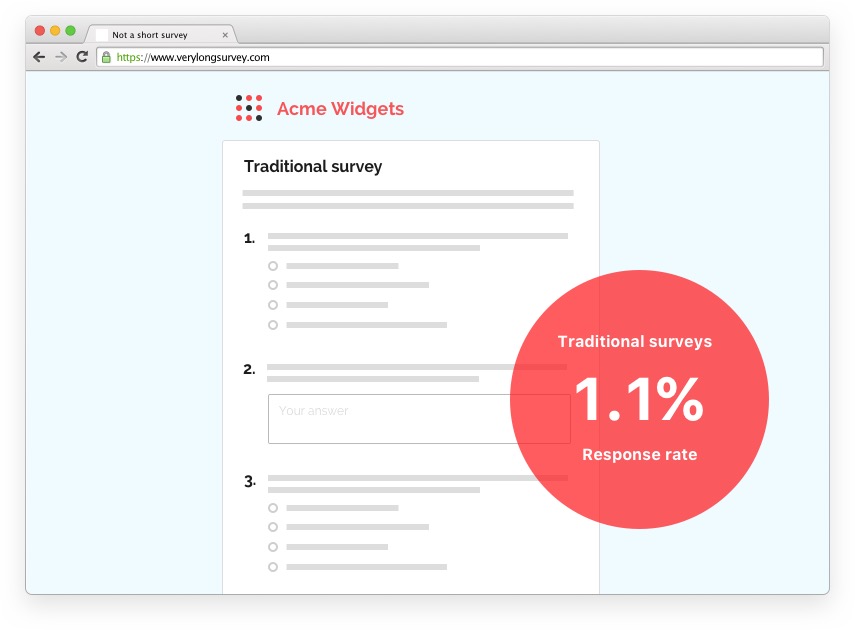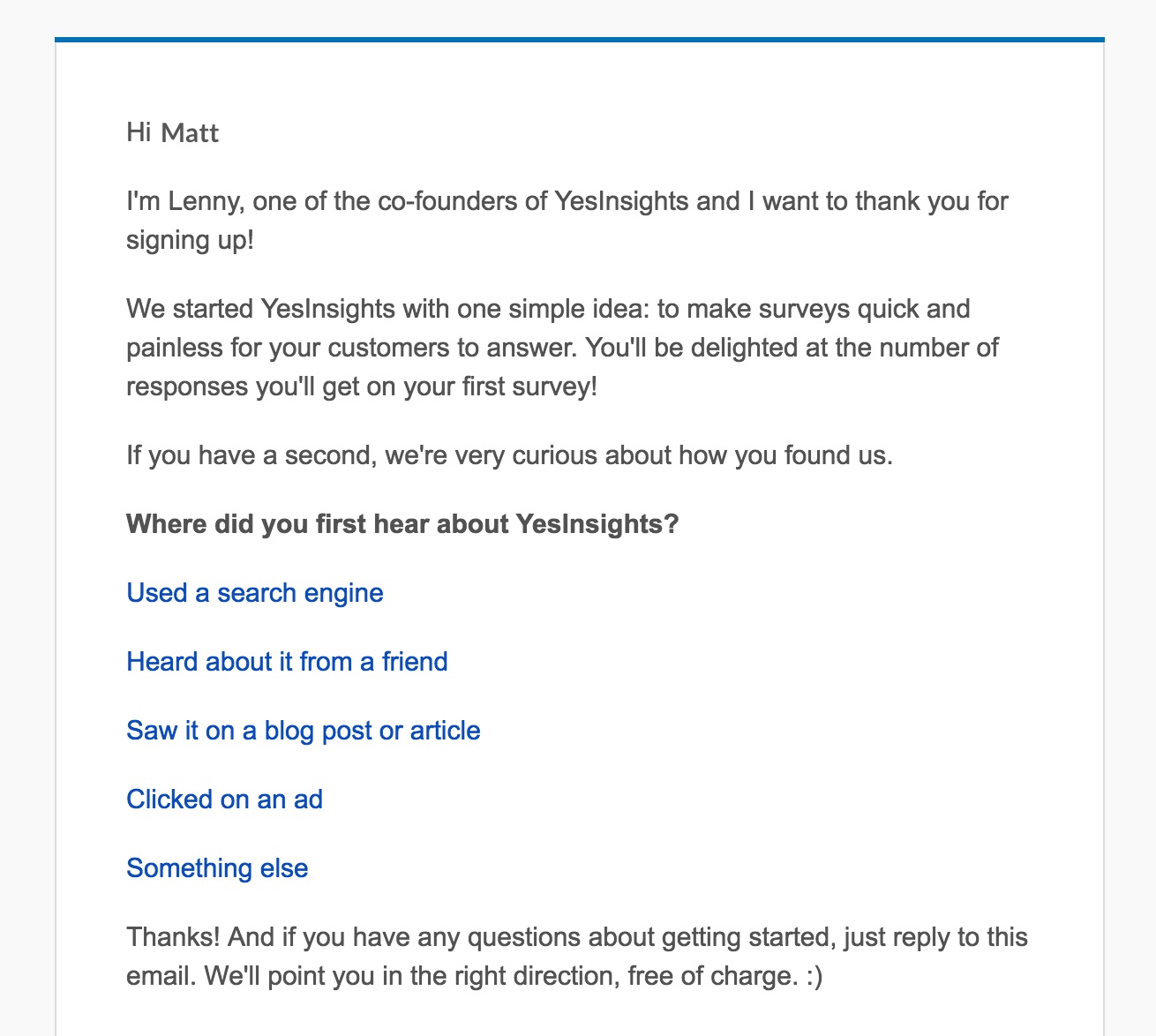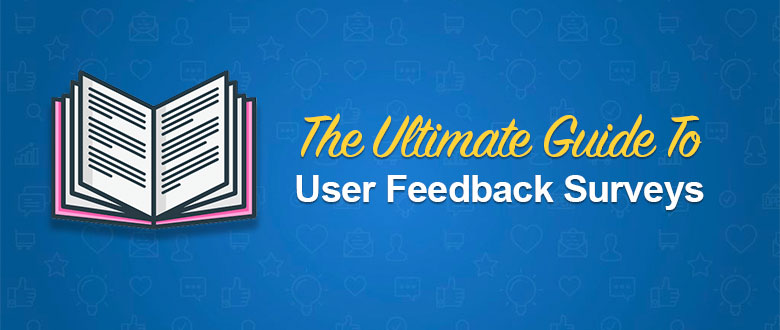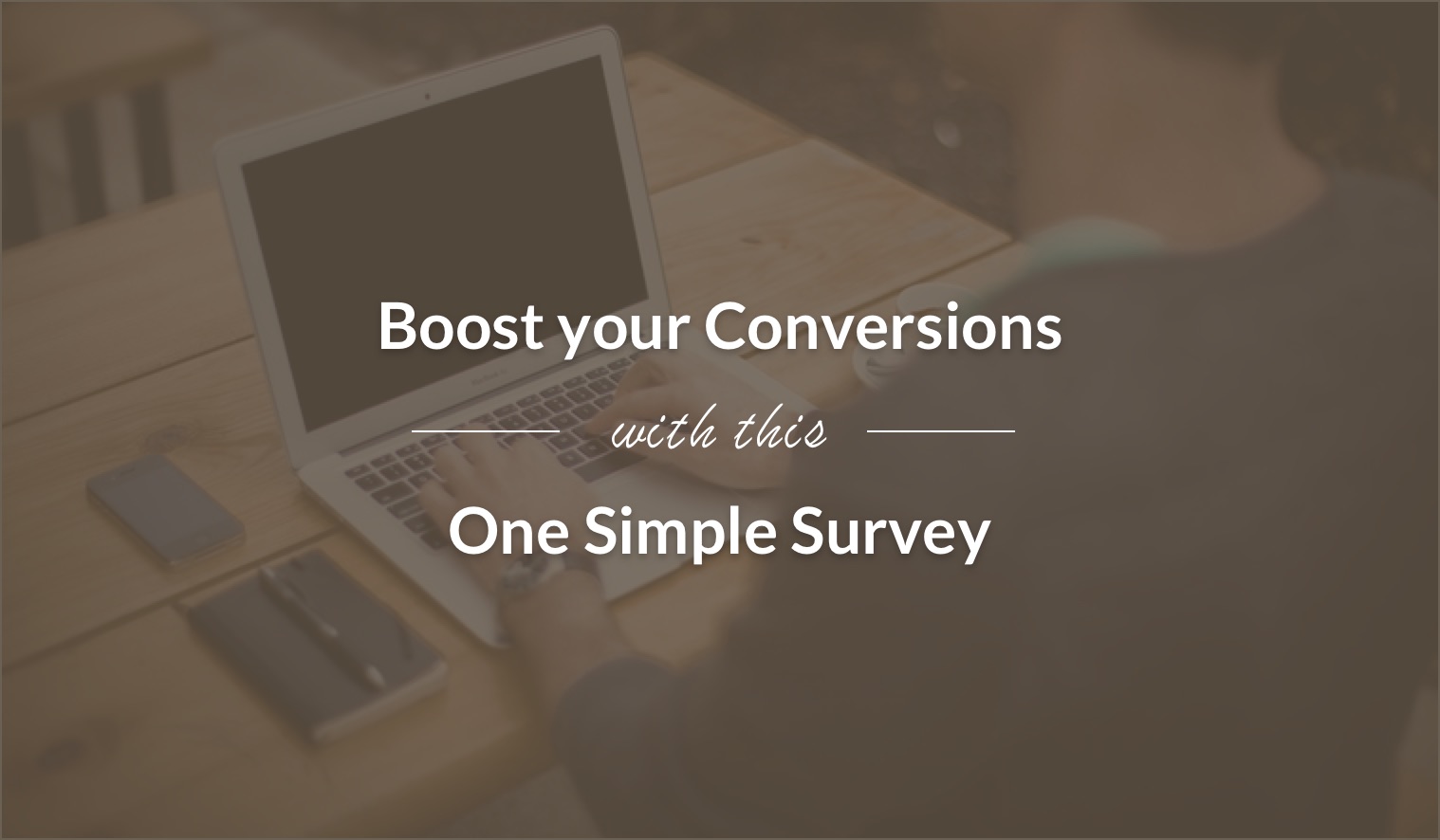How To Create the Best Customer Surveys That Actually Get Engagement
Every business thrives on knowing what their customers are thinking. The reason why top companies are successful is they consistently conduct surveys and get customer feedback early and often.
Unfortunately, few people will contact you voluntarily. In fact, 96% of people with negative feedback won’t tell you (although they will tell other people).
If you want to get customer feedback, you have to reach out directly. And one of the most popular and scalable ways to do this is through email surveys. But if you’ve tried this before, you know how difficult it is to get people to respond.
When Kapost sent a survey to 23,310 marketers, only 1.1% of people completed it.

That’s a horribly low response rate, but it’s actually very common. Most surveys are blasted to everyone on a huge list with little context. Customers don’t care enough to respond. Would you? I know I wouldn’t!
So what’s the best way to ask customers for feedback? How do you send surveys people actually want to respond to?
Luckily, we’re going to show you how to create the best customer surveys ever! Instead of blasting surveys to your list, you need to…
Ask questions in your drip or triggered email campaigns
When customers sign up for your product, do you send them a welcome email? Do you also follow up with automated emails every few days that help them use your product? If you answered ‘Yes’ — you should do this immediately:
Add a single, contextual question to a few of your drip or triggered emails.
This is one of the most effective, yet underused techniques for gathering customer feedback.

This is our very own welcome email (sent through Intercom). More than 50% of people who open this email response.
Why does this work?
Because triggered emails tend to be highly relevant to the customer. In fact, research shows they get up to 8x more opens and clicks than marketing emails. Secondly, these emails also tend to help the customer. If you help them, they’ll help you.
And you’ll establish a system that consistently gets feedback early and often by asking questions in your email drip campaign. While also showing them that you value their opinions highly.
Now that you’re ready, here are the 6 questions you need to ask:
Question 1: Where exactly did you first hear about us?
Goal: This question will help you find out what your most effective marketing channel is.
You can see your customer’s referral path with any analytic tool, but that only tells you the LAST site they visited prior to yours. By asking this question instead, you may discover that your customer heard about your product from a podcast they listened to last month, or that a speaker at a popular conference mentioned you.
Best practice: Send this in your welcome email or in an another email 1-2 days after sign up so their memory is still fresh.
Question 2: What are you hoping to accomplish with us?
Goal: This question is used to discover your customer’s use-case as well as find out how they perceive your value. This is highly helpful to guide product on which features to prioritize, improve your marketing message, or help you sell to your customer by understanding their intentions.
Best practice: Send this with your welcome email or on the second email in your campaign. Asking this in your welcome email will give provide better insights on your marketing message, while a later email will be better for product insights.
Question 3: What persuaded you to upgrade your account?
Goal: Once a customer has upgraded their account, it’s important to discover what the levers were. Which features were most useful to them?
Best practice: Ask this question in the congratulatory or confirmation email your customer receives when they upgrade.
Question 4: Why did you decide not to buy/subscribe?
Goal: When someone decided not to use your product, wouldn’t you want to find out why?
You’ll discover if they found another product, your prices were too high, your product was poorly designed, or perhaps they were just kicking the tires around. Armed with this knowledge, you can make changes to win future customers.
Best practice: Send this 30-90 days after a customer trial period has ended. If you don’t have a trial period, you can use another event that signals a customer is not going to convert.
Question 5: What would you miss most if you could not use us?
Goal: This question will help you discover your most useful features or product strengths.
Your customers are likely using a lot of features, but there is probably one they find more useful than the others, and tell their friends about. By discovering your ‘killer’ feature you improve both your product offering and marketing message.
Best practice: This is best sent to your engaged users. I would send this email to users 1-3 months after they upgraded their account.
Question 6: How likely are you to recommend us to a friend or colleague?
Goal: This is a standard Net Promoter Score question and is highly correlated with customer satisfaction.
Use this as an opportunity to reach out and help customers who are dissatisfied, or encourage customers who are very happy to promote your product.
Best practice: You should send this to all converted customers bi-annually or quarterly and try to improve the score over time. Another smart idea is segmenting your customers to discover which subset is the most satisfied. You can then market heavily to those customers.


